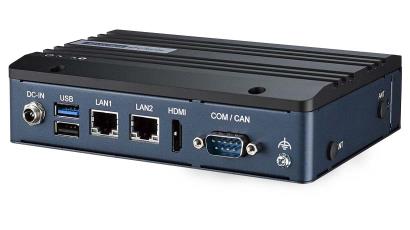
An AI edge compute box is a smart device that combines edge computing and artificial intelligence. It contains a configurable library of AI algorithms and is sometimes called an AI edge compute box or an integrated intelligent edge analytics appliance. It moves data processing and analysis to locations close to the data source, enabling efficient processing and real-time response. The following is an overview.
1. Definition
An AI edge compute box is a highly integrated device that embeds high-precision AI algorithms based on computer vision and deep learning, together with a video intelligence management platform. It is designed to perform real-time data analysis and processing near data collection points, such as IoT devices, sensors, or other edge devices. By processing data at the edge, it reduces transmission and processing latency and supports faster decision making.
2. Working principle
The working principle of an AI edge compute box can be summarized in several steps.
First, data acquisition and transmission. The box collects data generated by smart devices through various sensors, cameras, and other peripherals, and brings this data into the device for processing.
Second, edge computing and analysis. The box provides on-device compute and storage capabilities so that data processing, analysis, and decision making can occur locally without relying solely on cloud resources.
Third, output and feedback. Based on analysis results, the box generates output data and feedback signals to control devices or provide user interfaces.
The box can also cooperate with cloud services, forwarding tasks or data that require cloud-scale resources for further processing and analysis.
3. Features
AI edge compute boxes offer several functional characteristics. Processing at the edge enables local computation and low-latency responses, reducing transmission delay and improving system stability. They typically integrate high-performance processors that can handle complex tasks such as image recognition and data analytics. Security features often include authentication, data encryption, and access control to protect data privacy and prevent unauthorized access. These devices are designed to be flexible, extensible, and easy to deploy, allowing selection of different functional modules and interfaces according to deployment requirements.
4. Practical applications
AI edge compute boxes are applied across industries. By supporting multiple AI algorithms, they can be adapted to scenarios such as smart construction sites, smart campuses, smart communities, hospitals, intelligent transportation, and smart cities. Typical applications include:
- Industrial manufacturing: Real-time processing of equipment data to monitor production abnormalities and predict mechanical faults.
- Smart retail: Local analysis of customer flow, product recognition, and rapid response for checkout or inventory alerts.
- Intelligent security: Edge-based real-time analysis of surveillance video to detect people, abnormal behavior, and trigger alerts.
- Smart home: Integration with appliances to process voice commands and environmental data locally for faster response and enhanced privacy.
- Autonomous driving (low-speed scenarios): Vehicle-mounted edge boxes process sensor data for short-range obstacle avoidance and path planning assistance.
- Medical devices: Local analysis of monitoring data to provide rapid feedback on abnormal indicators.
- Agricultural IoT: Field edge nodes process temperature, humidity, and crop growth data to control irrigation and fertilization.
AI edge compute box has been adapted to a variety of algorithms and AI data platforms for scenarios such as campuses, communities, and construction sites. Available algorithms include flame detection, smoke detection, smoking detection, phone use detection, mask-wearing detection, person using mobile phone detection, personnel absence/sleep detection, fall detection, static electricity elimination, area headcount, perimeter intrusion detection, work-uniform detection, hard-hat detection, reflective safety vest detection, electric vehicle detection, illegal parking detection, entry/exit flow statistics, perimeter climb detection, abnormal displacement, and other scene-specific functions. These algorithms can be combined and configured per deployment requirements.
 ALLPCB
ALLPCB







